elderly
Latest

Amazon's Alexa Together caregiver service is available today
Amazon's Alexa Together service is now available, helping you take care of aging family using smart speakers.
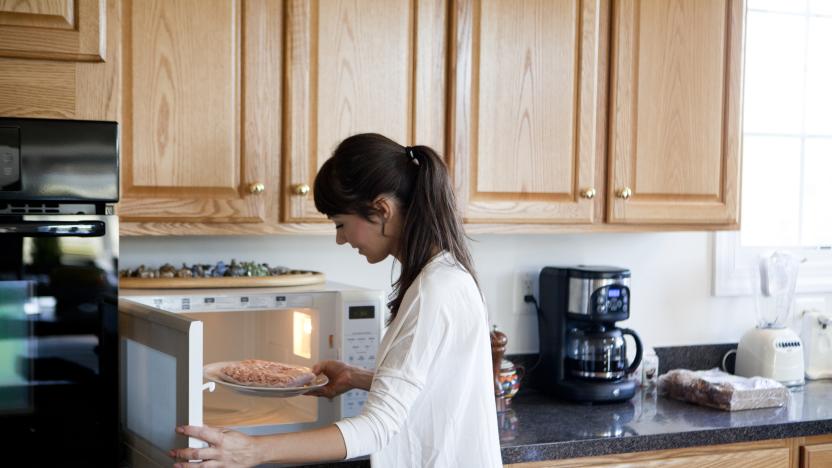
MIT wants to use your microwaving habits to study your health
Researchers from MIT's CSAIL created a wireless system that monitors how people use the appliances in their homes.
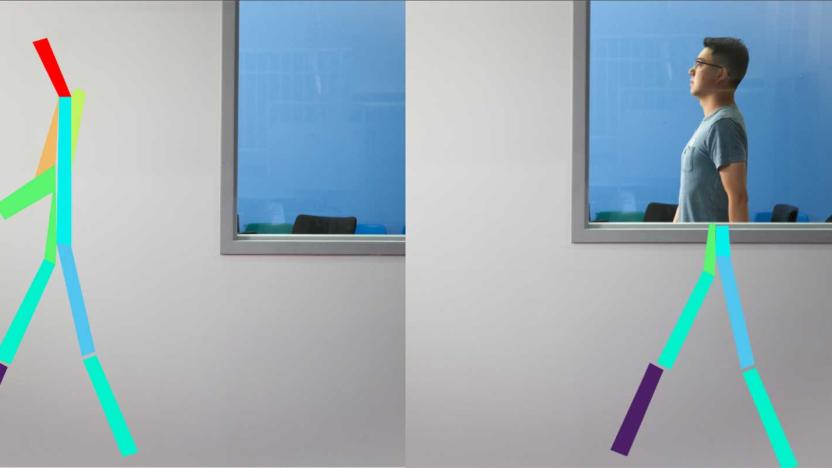
AI detects movement through walls using wireless signals
You don't need exotic radar, infrared or elaborate mesh networks to spot people through walls -- all you need are some easily detectable wireless signals and a dash of AI. Researchers at MIT CSAIL have developed a system (RF-Pose) that uses a neural network to teach RF-equipped devices to sense people's movement and postures behind obstacles. The team trained their AI to recognize human motion in RF by showing it examples of both on-camera movement and signals reflected from people's bodies, helping it understand how the reflections correlate to a given posture. From there, the AI could use wireless alone to estimate someone's movements and represent them using stick figures.
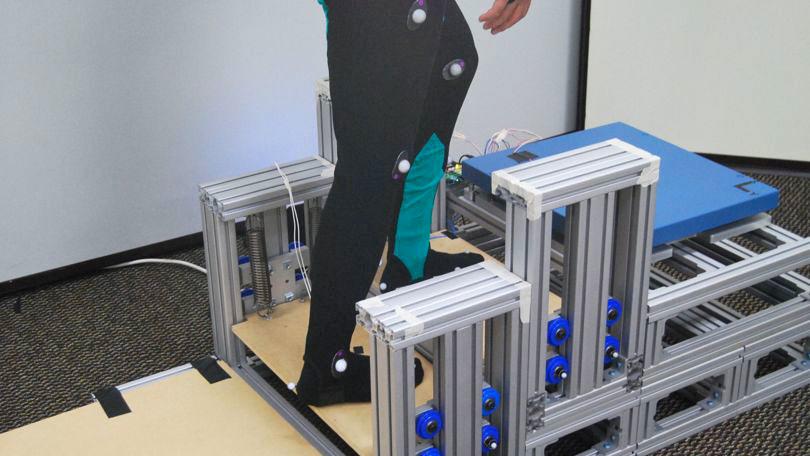
Energy-recycling stairs could replace stairlifts
For most people stairs are a minor inconvenience, but for those with mobility issues they're a nightmare. However, the tedious ascent is set to get a lot easier thanks to new "energy-recycling stairs" that are currently in the works. The idea is that the steps will help folks reduce the effort they expend in their journey by cushioning or boosting their efforts. The design is the work of a group of mechanical engineers, biomedical engineers and computer scientists at Georgia Tech. The spring-loaded stairs compress when stepped on, absorbing impact and saving 26 percent of a person's energy. This energy is then stored to provide a boost of 37 percent when stepped on going upwards.

Singapore wants a self-driving wheelchair by 2017
Singapore is pushing for businesses to develop an autonomous wheelchair that'll convey people around without instruction. The announcement came from Mark Lim, the official in charge of the country's digital services and commercial development division. According to GovInsider, the project is going to run until March 2017 and will harness computer vision, robotics and machine learning to ferry patients around hospitals. The report quotes Lim saying that "we have limited health care workers," and that "nurses are more precious in doing their work [...] than pushing them around in the wheelchair."
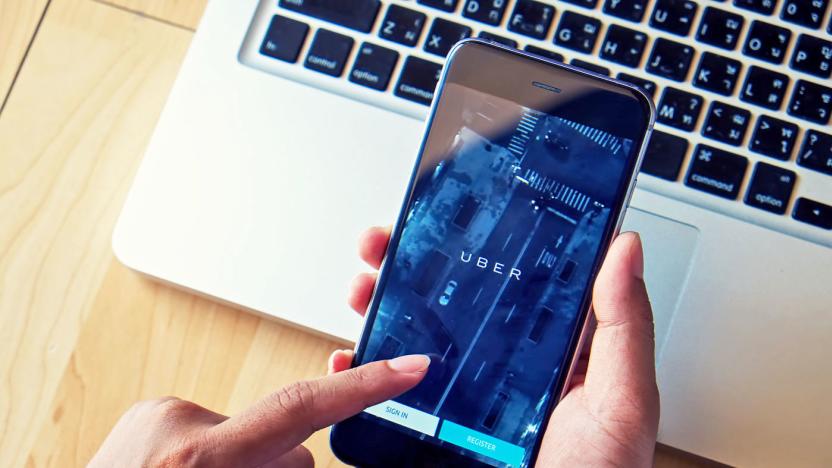
Uber comes to Japan to help the elderly
Japan doesn't allow amateur drivers to offer rides, so Uber's had a rough time establishing itself in the country. But the nation's aging crisis might just provide the opportunity for the ride-sharing firm to gain a foothold, thanks to a quirk of the law. As Reuters explains, the ban on amateurs doesn't apply in areas where public transportation isn't readily available, like in the Tango part of Kyotango city. It's one of several "depopulated" areas in the city, with a population with around 40 percent of people over 65. Taxi services were withdrawn from the area eight years ago, and the only way to get around is by a around-town hopper bus that you have to book a day in advance. This dire transport situation has led regulators to give the thumbs up to Uber so that it can begin offering rides.

The robot revolution starts with data entry and small talk
Pepper the home robot is looking for work. According to SoftBank, the Japanese company behind the humanoid bot that looks like a friendlier version of an anime villain, this is the year that robots start working for us. That said, businesses are keeping tasks simple. Easy, uncomplicated, dull, simple. So far Pepper has made its way into 500 companies. This week I toured Pepper's early career options.

I became a cyborg to feel older, not stronger
I like to joke that I'm technically 33 years old, but on the inside I'm 65. I'm less inclined to make that joke after spending 20 minutes or so inside Genworth's "Aging Experience" exoskeleton. The R70i, which apparently is a barely coded reference to the fact that 70 percent of Americans will need some sort of long term care as they age, is a full body simulator that lets you experience what its like to lose your sight, hearing and even range of motion as the effects of aging creep in.
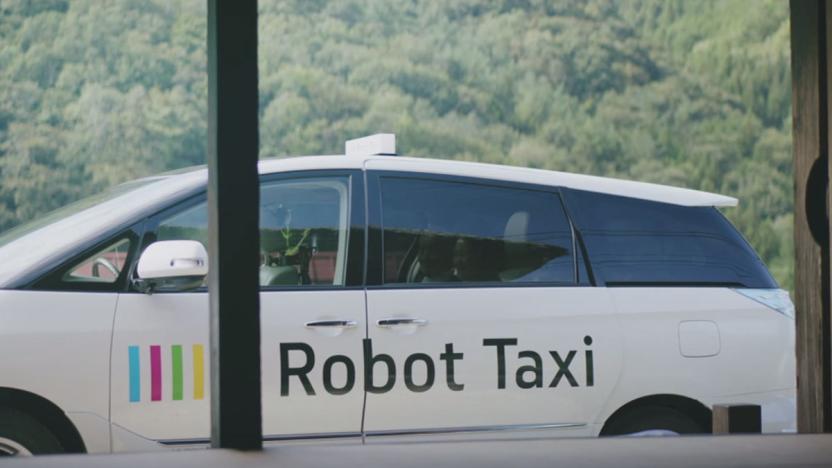
Self-driving taxis will begin trials in Japan next year
Self-driving cars are a few years away from becoming a thing, right? Not in Japan, where the company Robot Taxi has announced that it'll start testing robotic taxis in 2016. A report by the Wall Street Journal reveals that the firm will begin by offering autonomous rides to 50 people in Kanagawa prefecture, just outside Tokyo. The limited trial will ferry the participants from their homes to local stores and back again, all the while with a human operator in the driving seat -- just to make sure that nothing goes wrong.

Comcast is offering cheap internet for old folks
Comcast is launching pilot schemes for its low-cost internet service aimed senior citizens, coming to San Francisco and Palm Beach County, Florida. It forms part of Comcast's Internet Essentials service that launched in 2011,offering cheaper internet connections to low-income families since 2011. Internet Essentials consists of a 10 Mbps connection (recently doubled) for just under $10. The expansion of the scheme should help to cover where are unable to get connectivity, while giving some welcome good publicity to, ugh, this company.Comcast says the scheme has so far "connected more than 500,000 families" to its service. The internet provider also references research from Pew that found that less than half of seniors (aged 65 and older) have high-speed Internet at home. At the same time, alongside improving the speed of the service, Comcast is offering a free WiFi router to existing Internet Essentials customers. [Image credit: Flickr/ Dauno Settantatre]

Elders wait for traffic, play Grand Theft Auto 5
The Fine Brothers offered another React Gaming video, but unlike the youthful ones in the past, this one features senior citizens taking Grand Theft Auto 5 out for a spin. The charming video shows the elderly folks stealing cars, shooting civilians and above all else, obeying traffic signals. Grand Theft Auto 5's PC version will launch on March 24. The channel's previous reaction videos included teens playing Mario Kart 64, commenting on the Game Boy as well as just plain sucking at Mega Man. Another video features Game of Thrones' Maisie Williams discussing the absurdness of Nintendo's NES. Now that The Fine Brothers delved into senior players reacting to video games, we don't know if these videos make us feel overly young or old. [Image: Rockstar Games]

OnKol captures your loved ones' health data so you don't have to
Distance can sour even the fondest familial relationships, and they're even trickier to sustain when health issues are involved. That's where a small, Midwestern hardware startup called OnKol comes in -- it's making a handsome hub for all the digital health data you can squeeze out of compatible health monitors (a decent chunk of which have cables that terminate in USB jacks). It'll also play nice with health devices that support Bluetooth connections, though those can be a little tougher to come by. The end result? A sort of one-stop shop to help you keep tabs on loved ones who could use some remote (but caring!) eyes.
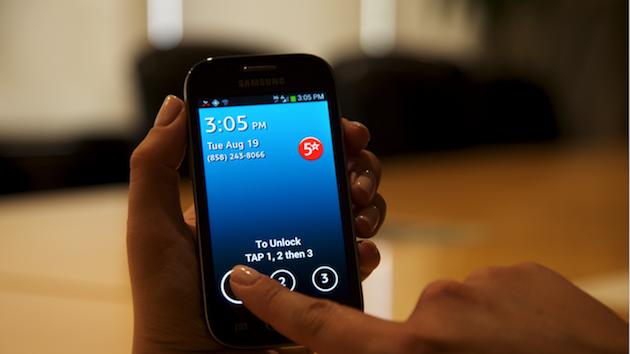
GreatCall Touch3: a smartphone designed for the elderly
The Jitterbug brand has long focused on making devices tailored for "aging Americans," combining easy-to-use software with affordable hardware. GreatCall, the creator of those, today revealed the Touch3, the latest addition to its repertoire of phones designed for the elderly. Although the new Touch3 leaves behind the Jitterbug label, its purpose is still very much the same as GreatCall's Touch, Touch 2 and other older handsets. Obviously, GreatCall doesn't intend its new, Samsung-made smartphone to go toe to toe with the Android powerhouses of the world. Instead, the company wants the Touch3's custom software to be the main appealing factor, which features an oversimplified user interface that offers quick access to the essentials, like phone or camera, as well as a set of GreatCall apps to assist in case of an emergency. If you'd like to get one for, perhaps, momma or poppa, the Touch3 is now available in the US for $170 -- but do keep in mind GreatCall does have a monthly fee on some of its pre-loaded, care-focused applications.

Activity tracker for seniors lets you know when something's wrong
We're always interested in wearables that go beyond just telling you how many steps you've walked in a day. CarePredict, for instance, is building a smartwatch that's designed to monitor the elderly while maintaining their independence. The Tempo is a wrist-worn sensor that keeps an eye on someone's activity patterns, and should it spot an anomaly, raise the alarm. It works by mapping out a general schedule of the day, and observing changes like an unusual mid-day nap or if someone has remained still in one room for too long. It'll even observe trends over a much longer period of time, so if someone's walking pace slows over a couple of weeks, you'll be able to see it and address any underlying issues.

Germany turns to 3D printed food to help those who can't swallow
See that meal up there? All of it was crafted on a 3D printer. Smoothfood is a project designed to provide better meals for both the elderly and sufferers of dysphagia -- an inability to swallow food. The process requires freshly-cooked ingredients to be pulped like baby food, before being mixed with a secret additive mix and regurgitated by a modified Foodjet 3D printer. The meal looks, and even apparently tastes, the same as it did before the process, but simply melts in the mouth instead of choking whoever would eat it. Smoothfood can currently create meals with Cauliflower, Peas, Chicken, Pork, Potatoes and Pasta, with more foodstuffs coming at some point in the future. We're slightly nervous that we're going to have to try some of this at a forthcoming trade show, so let's hope it's all as tasty as its creators claim.

Japanese smart diaper is destined to have a lot of crappy days
The current move towards wearables is surely good news for us, but unremittingly bad news for them. A flexible sensor developed at the University of Tokyo is about to discover just how bad when it's put to work as a sort of early warning system inside diapers. It's constructed from a printable organic circuit that detects changes in wetness, temperature and pressure, but apparently not smell (small mercies). It can charge wirelessly and transmit data wirelessly too, so that a caregiver holding a receiver can tell whether a baby or incontinent elderly person needs changing without having to unclothe them first. The device is expected to come to market as soon as its power efficiency has been improved, and we bet it can't wait.

Ask Engadget: best device for the elderly?
We know you've got questions, and if you're brave enough to ask the world for answers, then here's the outlet to do so. This week's Ask Engadget inquiry is from Douglas, who wants to help his aunt get online. If you're looking to ask one of your own, drop us a line at ask [at] engadget [dawt] com. "I live in California and my elderly aunt lives in New York. I'm looking for a way to get her online in an easy and accessible way. I've looked at a Chromebook, but I'm worried that it'll be too intimidating and the text will be too small for her weak eyes. I've also looked at a first-gen iPad, since I can find one for $150 which is about my budget. All she really needs to do is run Skype and Facetime, Facebook, email and looking at pictures." Well, if you're concerned that a Chromebook will be too intimidating, then perhaps a first-generation (or second-hand iPad 2) will be just the thing. Then again, you can't just take our word for it, so let's open this up to the commenters to see if they've found something even easier for getting your elderly relatives online.

Should your auntie buy an iPad?
Over at Macworld, Senior Editor Chris Breen has an answer to this all-important question: should your Aunt Vilma buy an iPad? Her name may be Rosalie or Helen instead of Vilma, or it may be a father or uncle, but you know the type -- a well-meaning older person who has seen all the "cool kids" in his or her age group getting one of these futuristic tablets and then asks you, the younger hipster with all of the latest gizmos, if buying one is a good idea. As Breen notes, it's not an easy answer and people often don't find out how useful an iPad can be until they've used one for a while. Breen provided six areas of discussion for Aunt Vilma to consider before dropping the coin on an iPad: Portability -- an iPad, especially an iPad mini, is made to be carried with you pretty much all the time. Portability means that you're able to use the device more often than a laptop or desktop located in a sewing room "office." A portable device can be a boon for gathering information or checking in with friends via Facebook, but it's also a barrier to interacting with real people. Access -- Aunt Vilma or Uncle Elmer might find it helpful to know that by paying a monthly charge and about US$130 more on the upfront cost of an iPad, they can get a cellular model of iPad with access just about anywhere. That can be a real boon when traveling (at least in their home country), especially if they're concerned about the security of free WiFi networks. Ease of Use -- Just about anyone can figure out an iPad in a few minutes. It's rare when I've seen anyone who couldn't do amazing things with an iPad after figuring out that tapping an icon does something... Breen says he thinks that it's also easier to troubleshoot an iPad. I agree -- once I got my dad to understand how to restart the iPad to fix just about any problem, he stopped calling for support. Workspace -- If Aunt Vilma wasn't happy with trying to do things on that little iPhone screen, she'll be ecstatic with the larger keyboard on the iPad. There were a lot of "older folks" on the cruise that I was just on, and a lot of them were using iPads because "I can do everything I can do on my laptop (i.e., read my AOL mail and annoy my grandkids on Facebook) on a much lighter device." He goes on mention the device's location services and, of course, apps. You can read all of Breen's thoughtful tips at Macword.com. So what do you think? Is getting your "old" relative up and running on an iPad a good idea or a potential nightmare? Let's hear your feedback in the comments.

Toyota builds assistive robot to help the disabled around the home
Toyota has built the Human Support Robot, a 70 pound 'droid designed to help the elderly and less-able around the home. The tablet-and-voice-controlled unit can open your curtains, fetch items and even pick up after you, thanks to its single telescopic arm that stretches up to 2.5 feet. A tablet slot on top of its head lets you use the hardware as a telepresence device, although we're more interested in teaching it some attitude so we can live out our "sassy housekeeper" sitcom fantasies in peace.

Meet the OwnFone: a customizable mobile phone that epitomizes simplicity
The OwnFone is neither smart nor world-friendly, and yet it's managed to grab our attention just the same. Designed for use only in the UK, it represents a rather novel take on the mobile phone with its customizable nature and simplistic design. Before ordering, owners must select among two, four, eight or a dozen contacts, and it's highly recommended to include emergency services among that bunch -- there's no option to dial actual numbers, as every contact is programmed and stored in the cloud. In its current incarnation, contacts are represented by their names, but it will soon be possible to customize a phone with either photos or Braille. While owners can update a contact's phone number with a simple call to customer support, it's more cumbersome to replace a contact, as you'll need to order a decal to affix over the former friend. Due to its limited functionality, the OwnFone is best positioned as a backup or secondary phone, although its simplicity makes it particularly well-suited for children and some elderly individuals. As another nice touch, one's phone number is printed on the back of the OwnFone. You'll find it available today for £55, and all those curious to discover the customization options can check out the various colors, patterns and photos on OwnFone's website.











